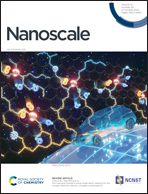Ferroelectric-assisted charge carrier separation over Bi2MoO6 nanosheets for photocatalytic dye degradation†
Abstract
Low energy conversion efficiency from the absorbed photon to the catalytic species remains a major obstacle for the real application of photocatalysis. In recent years, the introduction of a built-in electric field has proved to be impactful in facilitating the photoinduced charge separation, among which, ferroelectric polarization is highly recommended by getting rid of mechanical stresses. Developing ferroelectrics directly as photoactive semiconductors is promising in view of the synergistic catalytic enhancement. Therefore, Bi2MoO6 nanosheets with ultrathin layered structure (<10 nm) and abundant oxygen vacancies were synthesized through the hydrothermal method. The two-dimensional nanostructure created more active sites and a convenient polarization condition. Subsequently, corona poling was applied on the Bi2MoO6 nanosheets, which can significantly accelerate the 100% degradation rate of RhB from 50 to 20 min, surpassing that of metal-free photocatalysts. The combined effect of semiconductor, ferroelectric polarization, oxygen vacancies, and nano-layered structure offers new strategies for designing multifield coupling catalysts, providing insights into the regulation of charge carrier dynamics.



 Please wait while we load your content...
Please wait while we load your content...